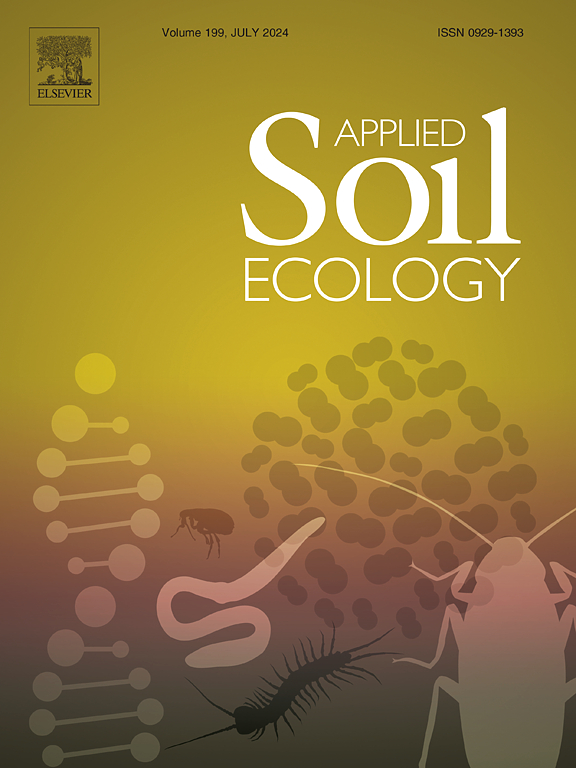Mixed eucalyptus plantations in southern subtropical China effectively stabilized the rhizosphere-associated bacterial network and facilitated soil ecological function
IF 4.8
2区 农林科学
Q1 SOIL SCIENCE
引用次数: 0
Abstract
With the simultaneous reduction in the amount of nitrogen (N) fertilizer required in commercial stands, mixed eucalyptus/legume plantations are highly suitable for sustainable development. However, in forest ecosystems, information on the mechanisms underlying the improvement in soil ecosystem function and changes in rhizosphere-associated bacterial communities driven by management measures involving N application and mixed plantations simultaneously is limited. We assessed the effects of fertilizer regime (0, 70, 140, and 210 kg N hm−2) and planting pattern (pure plantation or mixed plantation) on soil characteristics and rhizobacterial communities after 6.5 years of field experiments in southern subtropical China. We found that under N application and mixed plantation, the pH value, organic carbon, total N, NO3−-N, NH4+-N, and microbial biomass carbon (MBC) of rhizosphere soil increased considerably. The mixed plantation favored an increase in the microbial biomass nitrogen (MBN) content and a decrease in the MBC/MBN ratio at the medium N (MN) level (140 kg N hm−2). Urese activity and bacterial α diversity (Chao1 and Shannon indices) also presented the highest values at the MN level, and their values decreased at the high N level (210 kg N hm−2). Nevertheless, neither N application nor planting pattern significantly affected bacterial α diversity. Overall, the rhizosphere-associated bacterial co-occurrence network exhibited higher values of clustering and modularity due to the MN application and mixed plantation, which also facilitated soil fertility and soil ecosystem function. According to structural equation modeling, soil fertility, soil enzyme activity, and co-occurrence network modularity had stronger total effects on rhizosphere bacterial α diversity when driven by the planting pattern than when driven by N application. These findings provide valuable insights into forest management practices to enhance soil ecological function and promote sustainable management in industrial forests.

求助全文
约1分钟内获得全文
求助全文
来源期刊

Applied Soil Ecology
农林科学-土壤科学
CiteScore
9.70
自引率
4.20%
发文量
363
审稿时长
5.3 months
期刊介绍:
Applied Soil Ecology addresses the role of soil organisms and their interactions in relation to: sustainability and productivity, nutrient cycling and other soil processes, the maintenance of soil functions, the impact of human activities on soil ecosystems and bio(techno)logical control of soil-inhabiting pests, diseases and weeds.
 求助内容:
求助内容: 应助结果提醒方式:
应助结果提醒方式:


